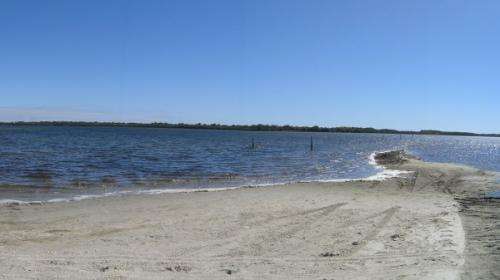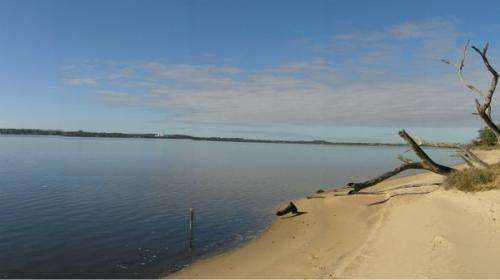Fish species flourish in hypersaline estuary

Scientists have a better understanding of fish capable of living in highly saline estuaries following an in-depth study of the Leschenault Estuary in south-western Australia.
A group at the Centre for Fish and Fisheries Research at Murdoch University studied the fish species present throughout the long basin of the permanently open estuary from 2008–2010 and compared them to data from 1994.
Research Professor Ian Potter says Leschenault is unusual in that it has a reverse salinity gradient, where evaporation and lack of river input into its upper regions causes salinity to increase moving upwards along the estuary, eventually becoming greater than in the ocean.
"This environment provides the opportunity to explore how salinity affects the species composition of the fauna that are adapted to very high salinities, as well as helping to understand the characteristics of the fish faunas," Professor Potter says.
Researchers caught a total of 27,044 fishes, representing 43 species, in the Leschenault Estuary between winter 2008 and autumn 2010.
The overall number of species was shown to decline from the base and lower regions to the upper and then apex regions during spring and summer, when the reverse salinity gradient was most pronounced.

The highest numbers of individual fish, however, were found in the apex region, where salinities reached 54 (compared to seawater which is 35) and temperatures 36oC. This area was dominated by three atherinid species.
"There are a few species that can tolerate the shallow, very high salinity and very high temperature areas," Professor Potter says.
"Most species are not very well adapted, but those that are benefit from a lack of competition and are thus very abundant."
Changing distribution
Comparisons of the data from 2008–2010 and 1994 revealed that the spotted hardyhead (Craterocephalus mugiloides) and common hardyhead (Atherinomorus vaigiensis) had colonised and become abundant in the Leschenault Estuary in the intervening period.
"What's interesting is that these two most abundant species were not there before in 1994," Professor Potter says.
"What we have hypothesised is that the distributions of these sub-tropical species have extended southwards from the Swan and Peel Harvey to the Leschenault, following increases in water temperature due to climate change," he says.
Professor Potter says more environmental consequences are likely with a drier climate and reduced rainfall.
"Less freshwater is entering the estuaries of south-western Australia, which are becoming increasingly closed off from sea and thus increasing in salinity."
More information: "Characteristics of the ichthyofauna of a temperate microtidal estuary with a reverse salinity gradient, including inter-decadal comparisons." Journal of Fish Biology, 85: 1320–1354. doi: 10.1111/jfb.12467
Journal information: Journal of Fish Biology
Provided by Science Network WA




















